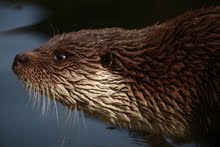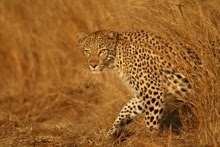Like most birders, I only tend to think about cleaning my dirty binoculars when I am out in the field. The challenge, of course, is then 'how does one clean a binocular or telescope lens in the field with out scratching that seriously expensive glass?'
Using your T-shirt is certainly the most commonly used method but probably not the best of ideas. I would be a telling a filthy lie if I said I had never used a dirty, sweaty T-shirt to clean off my fancy-shmancy Swaros. But I have learnt my lesson. At some stage I realised that it really was not a train-smash if I was caught out in the field without one of those cute little optics manufacturer-designed cleaning kits. mmm, is it bad luck to talk about rail accidents when one is travelling on a train? Hope not.
Nowadays, if I really have to clean my binocular or telescope lenses out in the field then I tend to rely on one of two methods:
1. blow off as much stuff as possible; pour water over the lens to wash off most of the grime; and then use my finger to gently wash the lens; finish by blowing off excess water and then using a MICROFIBRE cloth to give a final clean
2. Blow off; Lick (yes, lick it with your tongue - it is extremely effective!); MICROFIBRE
Not having a microfibre is not the end of the world, either. Just use the first method and try to blow off as much of the water as possible (this will help reduce the water-spots on the lens). This will normally suffice until I can get home to a microfibre cloth or borrow one from a fellow birder.
Birders spend a lot of hard-earned money to have beautiful equipment and I don't think it is that hard to keep them in good nic.
Happy birding
Dale
Using your T-shirt is certainly the most commonly used method but probably not the best of ideas. I would be a telling a filthy lie if I said I had never used a dirty, sweaty T-shirt to clean off my fancy-shmancy Swaros. But I have learnt my lesson. At some stage I realised that it really was not a train-smash if I was caught out in the field without one of those cute little optics manufacturer-designed cleaning kits. mmm, is it bad luck to talk about rail accidents when one is travelling on a train? Hope not.
Nowadays, if I really have to clean my binocular or telescope lenses out in the field then I tend to rely on one of two methods:
1. blow off as much stuff as possible; pour water over the lens to wash off most of the grime; and then use my finger to gently wash the lens; finish by blowing off excess water and then using a MICROFIBRE cloth to give a final clean
2. Blow off; Lick (yes, lick it with your tongue - it is extremely effective!); MICROFIBRE
Not having a microfibre is not the end of the world, either. Just use the first method and try to blow off as much of the water as possible (this will help reduce the water-spots on the lens). This will normally suffice until I can get home to a microfibre cloth or borrow one from a fellow birder.
Birders spend a lot of hard-earned money to have beautiful equipment and I don't think it is that hard to keep them in good nic.
Happy birding
Dale



















.jpg)



.jpg)








.jpg)


